Originally Posted At: https://breakingmuscle.com/feed/rss
If there’s one piece of equipment you need in your home gym, it’s a weight bench. But not just any type of weight bench. You need an adjustable weight bench, like the new and improved REP Fitness AB-5200 2.0. FID weight benches are a versatile, portable, and economical choice for beginners and athletes who want to spruce up their dumbbell workouts. Plus, if you have a squat rack and some barbells, you’re pretty much good to go.
Today, many brands, like REP Fitness, Rogue, Sorinex, and Titan, produce high-quality benches. However, none of them will be a good fit for everyone. Therefore, you have to evaluate your budget, fitness goals, and preferences to ensure you pick the right one for you.
As a 5+ year Public Health Professional and Writer, I’ve researched and written on several weight benches. I’ve also had a chance to try out a few for myself. In this REP AB-5200 adjustable bench review, I’m giving you all the deets so you can decide if this is personally worth the buy.
Key Takeaways
- On their website, the bench is automatically set to the fixed post option, making it a flat-incline bench. If you’d prefer a FID bench, select the “adjustable post” option.
- If you don’t like the bench, REP Fitness offers a 30-day money-back guarantee, but there will be a 15 percent restocking fee applied if it’s not returned in its original packaging.
REP Fitness AB-5200
4.1
- Dimensions: 17.5” H x 57.6” L x 25.8” W
- Weight capacity: 1,000 pounds
- Materials: 11-gauge steel
- Warranty: 10-year frame warranty
REP AB-5200 Adjustable Bench Pros
- Six different color options are available for the frame and rails. You can add a pop of color to your home gym or coordinate your bench with your other equipment.
- The AB-5200 can be stored in an upright position, which is beneficial for those with small spaces who want to tuck it away when they’re done working out.
- The bench has a 1,000-pound weight capacity, making it suitable for the majority of lifters.
REP AB-5200 Adjustable Bench Cons
- The wide pad doesn’t meet International Powerlifting Federation (IPF) requirements, so the AB-5200 may not be ideal for powerlifters who want to train at home.
- No compatible attachment options are available. The REP AB-5200 isn’t as versatile as other adjustable benches we’ve tried, which can be limiting for lifters who want to perform a wider variety of exercises at home.
REP AB-5200 Adjustable Bench Rating
At Breaking Muscle, we’ve been fortunate enough to try out some of the best weight benches on the market. From flat and FID benches to foldable weight benches – we’ve put them to the test. Here’s how the REP AB-5200 2.0 scored after we put it through our proprietary factor methodology system.
| Factor | Rating (out of 5) |
| Price and Value | 4.5 |
| Construction Quality | 4.5 |
| Delivery and Assembly | 4.5 |
| Dimensions | 4.5 |
| Padding | 4.5 |
| Footprint and Portability | 4.5 |
| Performance and Ease of Use | 4.5 |
| Incline Levels | 4.5 |
| Available Attachments | 1.0 |
| Warranty | 4.0 |
REP AB-5200 Adjustable Bench Overview
If I’m being honest, I think REP Fitness did their thing in this second iteration of the AB-5200. It’s evident that they listened to their customers and aimed to improve on the things they previously missed.
To start, the customization options are out of this world. It’s rare to find a weight bench that allows you to select from a plethora of frame and guide rail colors. Next, they’ve implemented their proprietary padding that’s grippy but also comfortable. Then, one of their most significant changes is to the adjustable back post, which is a win for those who like doing certain exercises, like decline bench presses.

This FID bench (flat-incline-decline) is attractive, high-end, and nice enough to pass as commercial gym equipment. Their attention to detail is undeniable, as you’ll find the laser-cut REP logo on the ladders and black hardware and stainless steel parts in various places. This space-saving bench has a lot going for it, but if we’re being honest, it’s certainly not the most budget-friendly option on the market. Plus, some things may make this a dealbreaker for you.
We’ll get into who should buy it and who might be better off looking for something else below.
Who Should Buy the REP AB-5200 Adjustable Bench
- Those who prefer ladder-style adjustments over pop-pin adjustments.
- Elite lifters who want a weight bench that’s stable enough to handle heavier weights.
- Individuals who prefer to customize their adjustable bench so that it fits their preferences/needs.
Who Should Not Buy the REP AB-5200 Adjustable Bench
- Trainees planning to do core exercises that may require leg rollers.
- Individuals who are looking for a budget-friendly bench.
- Anyone who likes adding attachments to their weight bench to increase exercise versatility.
RELATED: REP Fitness BlackWing Adjustable Bench Review
REP AB-5200 Adjustable Bench Review
In order to make a sound purchasing decision, there are a few things you should know. Therefore, in the following few sections, we will go over different factors, like price, construction, footprint, and more. We’ll expand on why we ranked each factor the way we did and address things that are easy to overlook. That should help you discern if this bench makes sense for your lifestyle.
Price and Value
At the time of writing this, the REP Fitness AB-5200 2.0 is $549.99, but that price is for the fixed post only. The fixed post version only works as a flat-incline bench, but if you upgrade to the “adjustable post,” you’ll get three additional decline angles. That’ll cost you an extra $30, bringing the price to $579.99. There’s also an option to get wider back and seat pads for $20. So, if you add that along with the adjustable post, you’re looking at $599.99.
This may be completely out of some people’s budgets, but with it being a higher-end product, it will cost more. Products like the FLYBIRD weight bench on Amazon cost around $149 and can get the job done, but, as someone who owns that, it’s missing features that the AB-5200 2.0 has.
For one, this wobbles when I’m doing most workouts, which limits its versatility. I don’t feel 100% comfortable using it to do step-ups with my adjustable dumbbells because of this. While it’s very maneuverable, since it’s only 28.5 pounds (12.92 kilograms), it lacks stability. It simply wouldn’t work for those wanting to use heavier weights, like a powerlifter. Plus, the pop-in adjustment slows me down. These are things you have to consider when you go cheaper.

Overall, I’d say you’re getting a very good amount of value for the price with the AB-5200 2.0, which is why we ranked it a 4.5 out of 5. If you want to pay a little less, check out the REP AB-3000 FID bench (for around $319.99) or the REP AB-5000 Zero Gap adjustable bench (for about $449.99).
RELATED: Best Budget Barbells
Construction Quality
When it comes to the overall build quality of this weight bench, we’ll easily give it a 4.5 out of 5.
The frame comprises 11-gauge steel and heavy-duty bolts, which can support over 950 pounds (430.9 kilograms). This type of material makes for a heavier bench (i.e., 115 pounds), but it also means it should be more stable. The AB-5200 2.0 is a solid piece of equipment that should remain sturdy no matter what back pad and seat pad adjustments you make. It’s the type of stability I wish my FLYBIRD had.
Although this weight bench is kind of heavy, it’s still on the lighter side compared to other high-end options. Heck, even the previous model of this was 10 pounds heavier. It’s also very maneuverable, thanks to the knurled, stainless steel handle that you can use to pick up the front of the bench. The ladder system and adjustment post have knurled handles as well. The older model just featured a stainless steel metal handle that wasn’t knurled.
REP Fitness also upgraded the pad material. The original one had premium, grippy vinyl, but this new one has proprietary CleanGrip pads, which we’ll expand on later.
RELATED: REP Fitness Colorado Bar Review
Delivery and Assembly
If you order the AB-5200 2.0 directly from the REP Fitness website, you’ll get free shipping. Be sure to select the frame and rail color you desire to customize it to your liking. There are six color options to choose from: metallic black, blue, army green, white, matte black, and red.
Once they ship it, your product will likely arrive in three to four well-packaged boxes. It’s a bolt-together bench, which cuts down the cost of shipping and lets the brand send the product in smaller packages.
As a consumer, I find that bolt-together benches are easier to pack when moving, but that also means assembly is required when you first get it. Fortunately, that’s not difficult to do. In fact, a team member said all they had to do was attach the back adjustment piece, the pads, and the feet.
In our book, the delivery and assembly process deserves a 4.5 out of 5 since the whole experience was straightforward.
Dimensions
Before you buy the AB-5200 2.0 for your home gym, it’s crucial that you know how much space it’ll take up and if it’ll work for your body type. When assembled, it’s 57.6 inches long, 25.8 inches wide, and 17.5 inches high. To give you perspective, it’s about ¾ as long as a twin-size bed, four US dollar notes wide, and about two women’s size five shoes high.
If you’re a competitive powerlifter, knowing these details is essential, as it’s best to train on benches that meet International Powerlifting Federation (IPF) height requirements. Interestingly, many weight benches are too low, which can interfere with your form and cause your hips to sit too far down. The wrong height can also compromise leg drive and your ability to push back into the bench, making it hard to correctly perform exercises like bench presses.
Whether you’re tall or short, the length of this bench should accommodate you. It’s a tad bit longer than some other benches, which is an advantage. With this one, you’ll have good head support when in an incline position and still be able to put your feet flat on the ground if you’re lying on your back.
Now, let’s switch gears to the pad dimensions. At 41.7 inches long, the back pad makes up much of this bench’s length, and its width depends on which version you select.
The standard version is 12 inches wide and will work for most people. But if you’ve got wider shoulders and lift big weights, consider the 14-inch one. Otherwise, you risk overhanging, which isn’t safe or stable when lifting heavy weights. If you opt for the wider pad, it won’t meet the IPF width requirements, and some people believe that getting a wider pad interferes with their range of motion. So keep that in mind before you buy.
The seat pad length is 11.4 inches long with a standard width of 12 inches that tapers to 8.9 inches. The wide version is 14 inches and tapers to 11 inches. Both the back pad and seat pad are 2.5 inches high.
One other thing you have to pay attention to with adjustable benches, in particular, is the pad gap. The pad gap is the distance between the back pad and the seat pad when it’s in a flat position, which is only 1.4 inches here. This is considered a “little gap,” so it shouldn’t feel like you’re sitting on a hole. If you’re trying to avoid pad gaps altogether, consider a flat bench or the REP Fitness AB-5000 zero-gap bench.
Based on the information above and our knowledge of weight benches, the dimensions here receive a 4.5 out of 5.
Padding
Experience has taught me that not all weight bench pads are created equal, so it’s refreshing that REP Fitness has put a lot of energy into this. As previously mentioned, the new iteration features the CleanGrip Pads. This is said to be grippier, firmer, and easier to clean than others. The brand says they made this upgrade in response to customer feedback, as trainees wanted something to stop them from sliding when bench pressing.
We had a member of the Breaking Muscle team give it a try, and they enjoyed using it during their workout. They said the pad was thick and firm, and it wasn’t uncomfortable at all, whether they were seated, on their chest, or on their back.
Based on our proprietary rating system, the padding on this bench gets a 4.5 out of 5.
Footprint and Portability
When the AB-5200 2.0 bench is fully assembled, it only takes up 10.33 square feet. To help you visualize how it might fit into your home gym space, consider this. The average bedroom is 132 square feet, and a one-car garage is about 240 square feet, so if you have that much area to work with, you probably can give this bench a dedicated space. Of course, this also depends on the other equipment you have in the room, like power racks, furniture, etc.
Now, if you’re short on space and need to stow your bench after use, say hello to vertical storage. You can stow it vertically, and it’ll only take up 3.1 square feet. To do this, just pull up the knurled, stainless steel front handle until it stands all the way up.
Although it’s 115 pounds (52.1 kilograms), the actual roll weight is more like 54 pounds (24.49 kilograms), so it’s not difficult to maneuver. To protect your floor, there’s UHMW plastic on the end of the bench to prevent scratches. This feature wasn’t on the last model, so it’s nice that REP Fitness made an update here. Lastly, the closed ladder design further ensures the pads are protected and stay in place.
All in all, it’s a solid space-saving choice and isn’t challenging to move around, so we gave it a 4.5 out of 5.
Performance and Ease of Use
Performance-wise, this bench may actually be better than some commercial gym options. It’s tough and can handle a powerlifter doing some serious barbell bench presses. REP Fitness says this bench was designed to allow for optimal performance no matter what position you’re in.

For example, they say that this bench only declines up to -8 because that level still lets you maintain proper leg drive for specific exercises. As a result, leg rollers aren’t even required for this bench. However, the lack of leg rollers might be a dealbreaker for those who want to use their bench to do a lot of core exercises and Nordic curls.
This bench uses a closed-ladder mechanism to make angle adjustments to the seat and back pads. All you have to do is use one hand to move the ladder to one of the steel-cut grooves. It’ll fall in place so you can return to your workout without worrying about the bench flimsily moving around. Sadly, I can’t say the same for my FLYBIRD weight bench.
Please note: If you get the adjustable post, there is an extra step you have to take. You’ll need to loosen the pop-pin on the post, pull it to adjust the angle, and twist it to tighten. Beginners may prefer the fixed post since it has fewer moving parts.
Because it’s so simple to use and doesn’t impede one’s workout experience, we’re giving it a 4.5 out of 5.
Related: Do This To Increase Your Bench Press
Incline Levels
If you stick with the fixed post, the bench will provide ten different back pad angles and four seat pad angles. The back pad angles are 0, 20, 30, 37.5, 45, 52.5, 60, 67.5, 75, and 80. If you upgrade to the adjustable post, you’ll have three additional decline angles, which are -8, -6, and -4. The seat pad angles are 0, 8, 20, and 30.
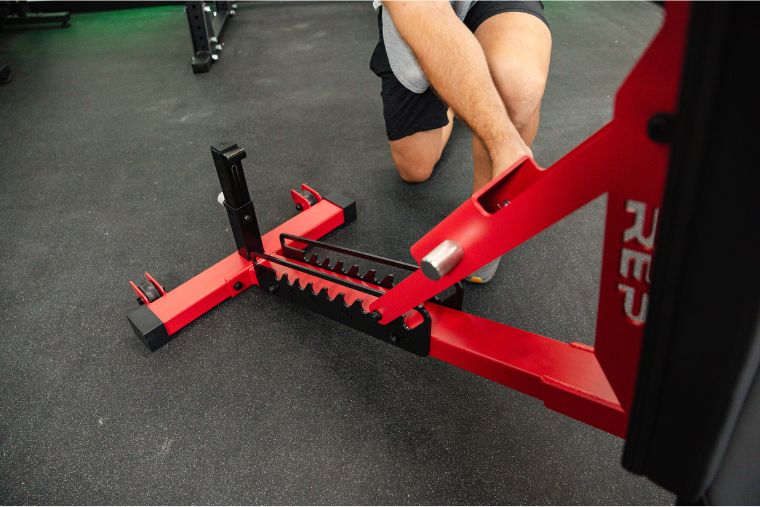
The original AB-5200 only had seven back pad angles and three seat pad angles, so the 2.0 model is a definite upgrade.
Available Attachments
At this time, the AB-5200 2.0 is not compatible with their leg roller or spotter platform attachments. Based on REP Fitness, the decline angle just isn’t aggressive enough to require a leg roller to help you hold your position. If that’s something you’d want, it might make sense to consider one of their other weight benches. Since attachments aren’t an option, we’re giving this a 1 out of 5.
Warranty
The warranty on this FID bench isn’t bad, but we’ve seen better. For instance, there’s a ten-year warranty on the frame but only 30 days on the upholstery. We would’ve liked to see at least a 90-day warranty on the upholstery, like what you’d find on the Rogue Adjustable Bench 3.0. Because of this, we rate it a 4 out of 5.
REP AB-5200 Adjustable Bench Specs
As you’re comparing the REP AB-5200 2.0 to other weight benches, there are some specs you need to keep in mind. Below, we’ll provide a quick overview of its dimensions, the materials it was made with, its weight capacity, and more.
Dimensions
The REP AB-5200 2.0 has the following dimensions:
- Length: 57.6”
- Width: 25.8”
- Height: 17.5”
Materials
The frame is made of 11-gauge steel, and the pads are created with their proprietary CleanGrip material. The latter is sticky enough to rip a paper towel, so it’s best to clean it with cloth. Even easy-to-overlook details are well-made, like the stainless steel handles and heavy-duty bolts.
Pad Thickness
The seat and back pad are 2.5 inches thick. This foam pad is denser than the original AB-5200, but it’s still comfortable.
Weight Capacity
This weight bench can support a 1,000-pound weight capacity, making it a good choice for beginners and advanced trainees alike.
Compatible Attachments
Currently, there are no available attachments for the REP AB-5200 2.0 weight bench.
REP AB-5200 Adjustable Bench vs. Rogue Adjustable Bench 3.0
A comparable option to the REP Fitness AB-5200 is the made-in-the-USA Rogue Adjustable Bench 3.0. It’s a quality-built adjustable weight bench with an 11-gauge steel frame that provides different color options, includes ten back pad angle positions, and is stowable.
However, this product, which has a smaller back pad width (11 inches) and doesn’t feature a decline option, costs around $595. On top of that, it’ll cost you an extra $100 if you want stainless steel rails and premium wheels. Those are very neat features, but they’re ones that many people might not care a whole lot about.
If you’re trying to decide which one of these would be the best adjustable bench to buy, I’d say the REP AB-5200 2.0. It will give you similar functions and quality as the Rogue 3.0 but at a better price. Now, the Rogue 3.0 bench may be a better option if you’re super tight on storage space (it’s slightly smaller than the 5200) and want hardly any pad gap (one inch versus four inches) Both are great options, though. What you pick comes down to personal preference and budget.
Rogue Adjustable Bench 3.0
4.5
- Dimensions: 17.5” H x 52” L x 11” W
- Weight capacity: 1,000 pounds
- Materials: 11-gauge steel, vinyl cover, rubber feet
- Warranty: Limited lifetime on the frame
Related: Best Home Gym Machines
REP AB-5200 Adjustable Bench Customer Reviews
Currently, REP Fitness has no authorized resellers in the United States, so you can only purchase products from their website. As a result, the only customer reviews we could find on the AB-5200 2.0 were on their own website.
There are only 53 reviews at this time, and all of them are positive. Forty-nine of the reviews had 5-star ratings, with customers making remarks like, “The bench was exactly what I was hoping it would be. I’m a fairly big guy 6’4″ 290lbs, and the bench doesn’t budge.” Another happy customer said “I’ve been using this for a few weeks now and it’s a MASSIVE improvement over my previous bench. This thing is a tank. Super solid.”
There were four 4-star reviews. One customer said, “Great bench, but doesn’t decline low enough”. One other individual remarked, “I’ve used many benches in the last 14 years, and this one seems to be the most solid! Just don’t order it in red… it’s not really red.”
Final Verdict: Is the REP AB-5200 Adjustable Bench Worth It?
Right now, the new and improved version of the REP AB-5200 2.0 Adjustable Bench is stealing the show. Unlike other benches, this one allows customers to have some creative freedom. They can select colors and even choose whether or not the decline option is something they want. Plus, it’s very well-constructed and attractive to the eye, making it stand out in any home or commercial gym it’s in.
While the price might cause some people to look elsewhere, this bench packs a ton of value.
Although it’s missing some versatility since you can’t add any attachments, it would still be worth it to most individuals. The knurled handles will come in handy when your palms are sweaty, and the stowability benefits those short on space. Anyone looking for a high-end FID bench built to promote optimal performance should consider the REP AB-5200 2.0.
FAQs
The REP AB-5000 is a lighter bench with a zero-gap design, a pop-pin adjustment style, and an optional leg attachment for decline variations. The REP AB-5200 has a small, 1.4-inch gap, ladder style adjustment mechanism, and can be upgraded to provide three decline options. The latter permits vertical storage, while the other one is meant to stay in place.
The AB-4100 has a closed ladder design, can be stored vertically, and is very lightweight. Unlike the REP AB-5000, this one has no option to decline and has a 1.57-inch pad gap.
Pros associated with the REP Fitness AB-5200 2.0 include vertical storage, six color options, its high-quality construction, and the knurled stainless steel handles.
Depending on your goals and preferences, you may see the following as cons. REP Fitness currently doesn’t offer any attachments for this bench, it’s on the pricier side, and the wide pad option doesn’t meet IPF standards.
The REP AB-5200 is 57.6” L x 25.8” W x 17.5” H.
The weight capacity is 1,000 pounds.
The post REP AB-5200 Adjustable Bench Review (2023): Expert Tested appeared first on Breaking Muscle.






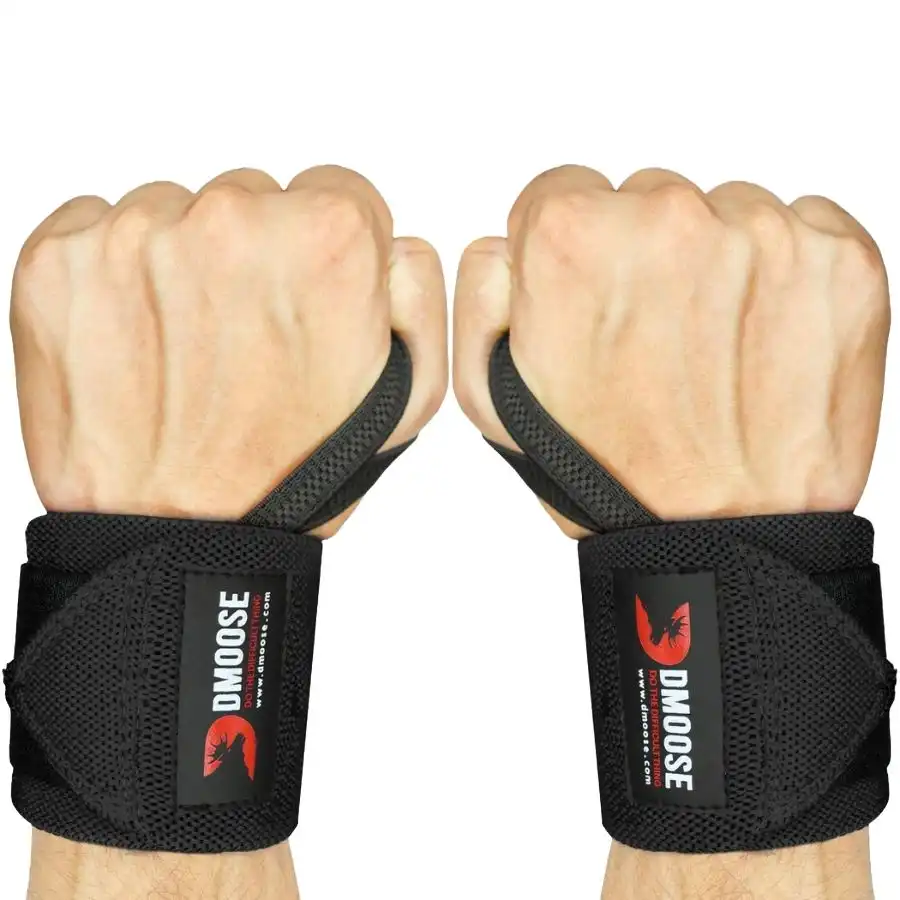

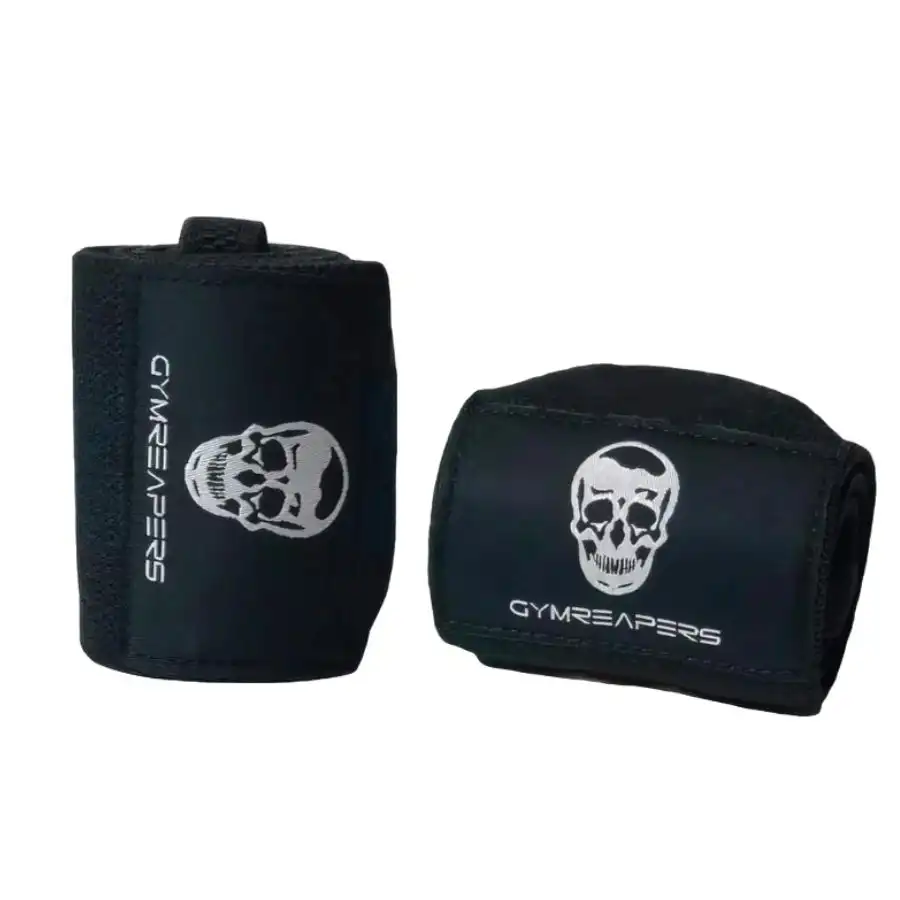




 The Primal Blueprint, and
The Primal Blueprint, and  As you can see, this law leaves plenty of room for you to structure your diet according to your personal tastes, preferences, and needs. Perhaps you prefer to eat relatively more plants than animals, or vice versa. You might be a gourmand who takes great pleasure in creating elaborate dishes and trying new foods, or maybe you’re content to repeat a few simple meals over and over. As long as you prioritize close-to-nature foods from these broad categories, you’re headed in the right direction.
As you can see, this law leaves plenty of room for you to structure your diet according to your personal tastes, preferences, and needs. Perhaps you prefer to eat relatively more plants than animals, or vice versa. You might be a gourmand who takes great pleasure in creating elaborate dishes and trying new foods, or maybe you’re content to repeat a few simple meals over and over. As long as you prioritize close-to-nature foods from these broad categories, you’re headed in the right direction.  You probably don’t have to fear food-borne illness anymore, aside from an occasional bout with non-lethal food poisoning. Instead, we contend with ubiquitous modern foods that undermine our health more slowly and more insidiously. Whereas our ancestors’ keen senses of smell and taste helped sort out the good from the bad, our ability to distinguish good from bad is now thwarted by food manufacturing and clever marketing.
You probably don’t have to fear food-borne illness anymore, aside from an occasional bout with non-lethal food poisoning. Instead, we contend with ubiquitous modern foods that undermine our health more slowly and more insidiously. Whereas our ancestors’ keen senses of smell and taste helped sort out the good from the bad, our ability to distinguish good from bad is now thwarted by food manufacturing and clever marketing.

 seat technology from the REP AB-5000 to give you the best of both worlds in one well-built bench.
seat technology from the REP AB-5000 to give you the best of both worlds in one well-built bench.






 (@ifbbmissytruscott)
(@ifbbmissytruscott)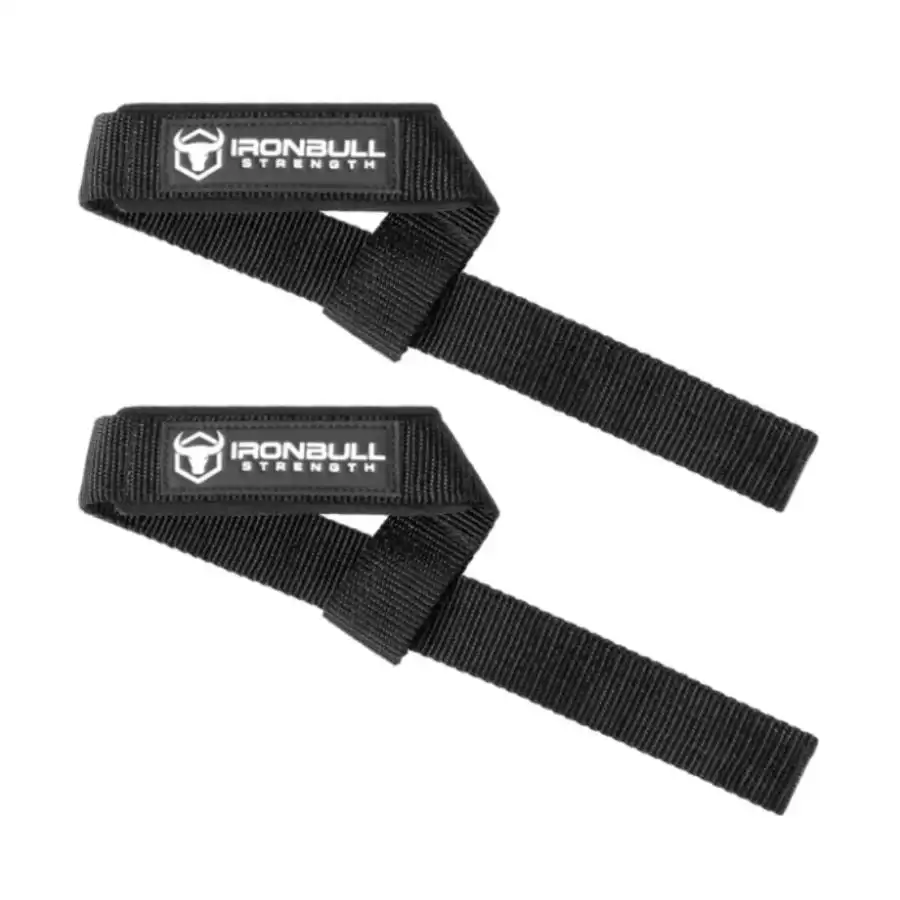



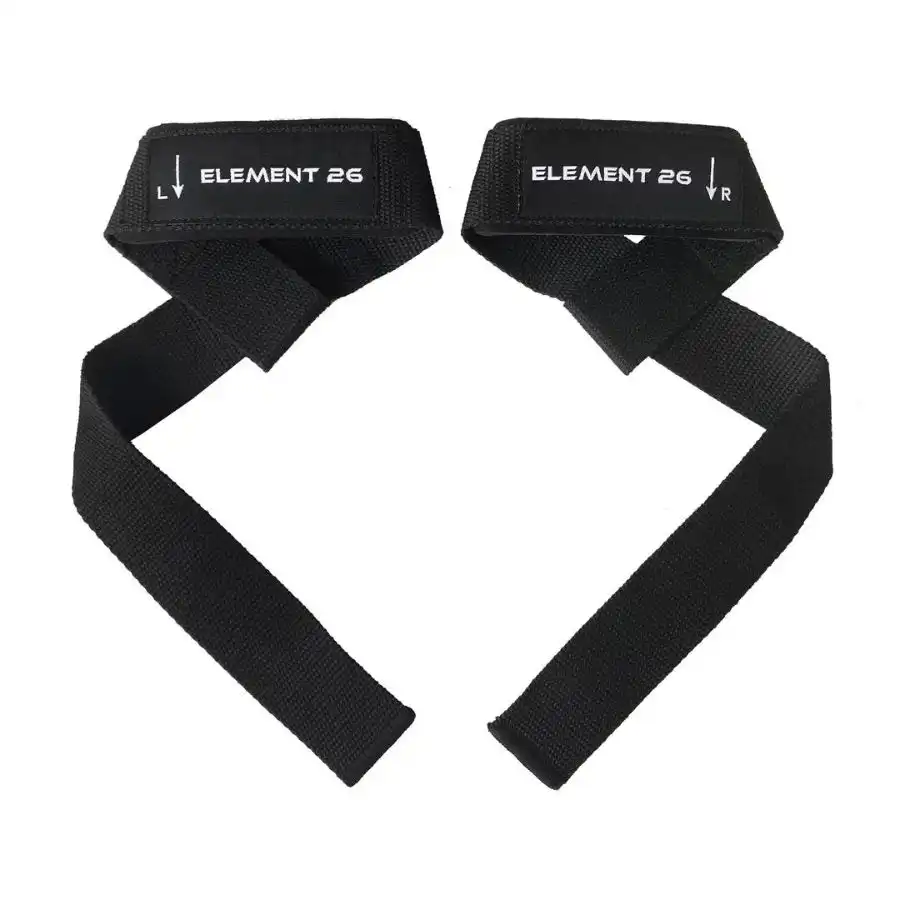
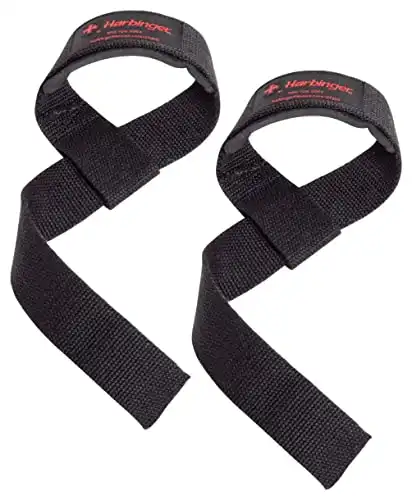




 For now classes are 6pm and 640pm at 2840 Wildwood st in the Boise Cloggers studio.
Book your class NOW!
click this ==>
For now classes are 6pm and 640pm at 2840 Wildwood st in the Boise Cloggers studio.
Book your class NOW!
click this ==>








